Elephant Ears are best known for their large, heart-shaped leaves. Low maintenance and easy care make these plants popular. But you might be wondering, are Elephant Ears annuals or perennials? Great question! We have thoroughly researched whether Elephant Ears are annuals or perennials.
Elephant Ears are considered tropical perennials. However, in colder climates, you need to bring them indoors to replant them in the spring. Otherwise, you would treat them as annuals because they will die from freezing temperatures.
This might lead to other questions like, should I fertilize Elephant Ears? Or, what kind of soil do Elephant Ears like? And even, do I need to prune Elephant Ears? Keep reading for the answers to these questions and more!
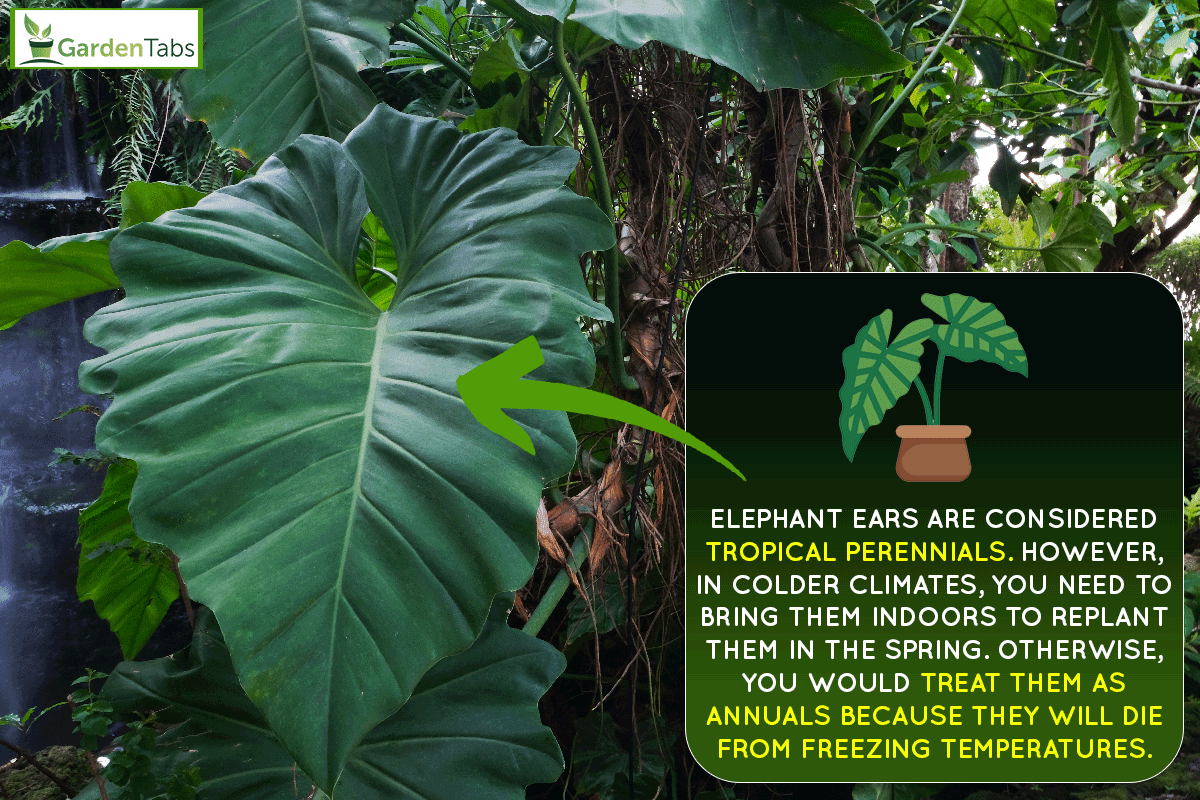
Are Elephant Ears Annuals Or Perennials?
Elephant Ears are tropical perennials that love warm weather and sunny locations. In colder climates, they are either treated as annuals or dug up and brought indoors.
So the real question is, where do you live, and what is the weather like?
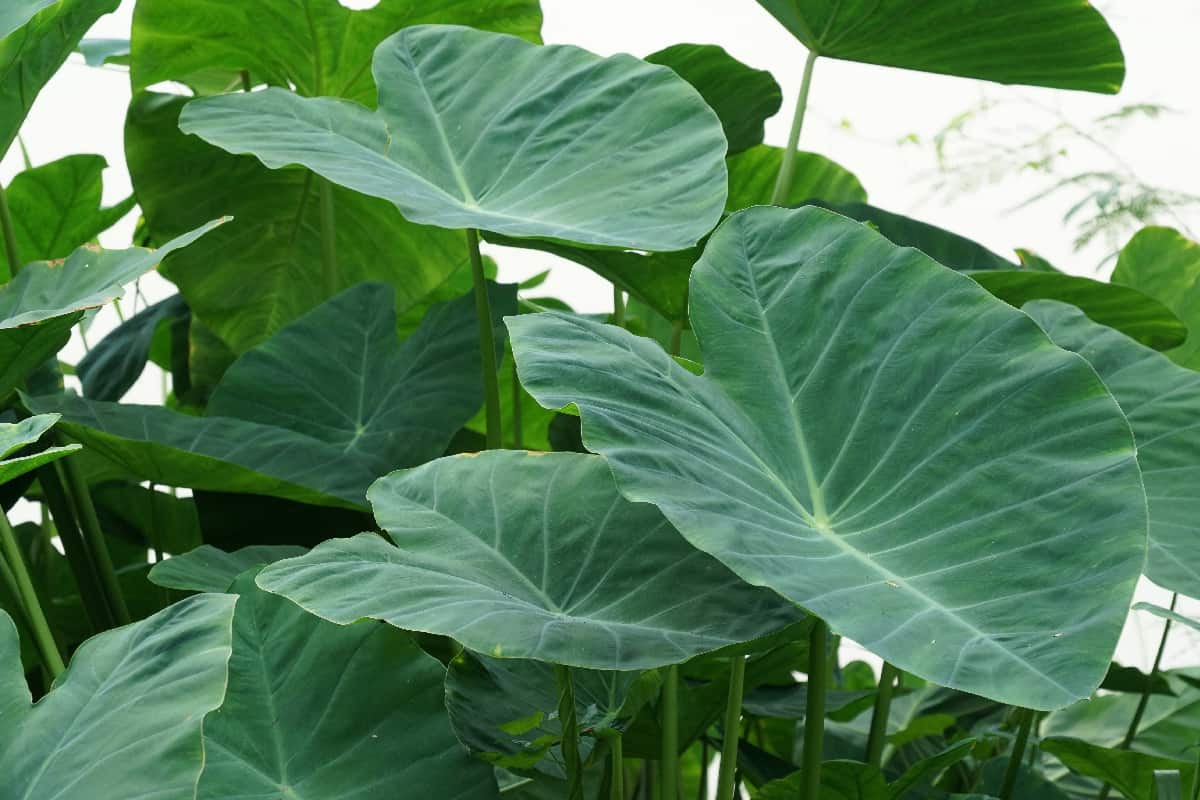
As a good rule of thumb, if temperatures get below 40 degrees, you want to dig them up before the first frost. With proper indoor care, you can replant them in the spring.
Let's discuss how to care for Elephant Ears indoors, along with some tips and tricks below:
How Do I Bring Elephant Ears Indoors?
As established, any temperature below 40 degrees Fahrenheit can cause damage to your Elephant Ears. This usually is in early fall. Pay attention to your local weather and plan accordingly.
Here are some basic steps on how to bring your Elephant Ears indoors.
- Start 1 foot away from the plant and carefully dig around it.
- Once the plant is loose, gently lift it out of the ground and move it inside.
- Store in a safe place until the root ball is dry.
- Once the root ball is dry, loosen the soil with your hands and cut back the stems.
- Allow the tubers to dry thoroughly.
- Once dry, wrap each tuber in paper and store them in a warm, dry place until spring.
- In spring, it's time to replant!
Voila! This is easy as 1-2-3 to ensure your Elephant Ear survives the colder winters.
Can Elephant Ears Be Houseplants?
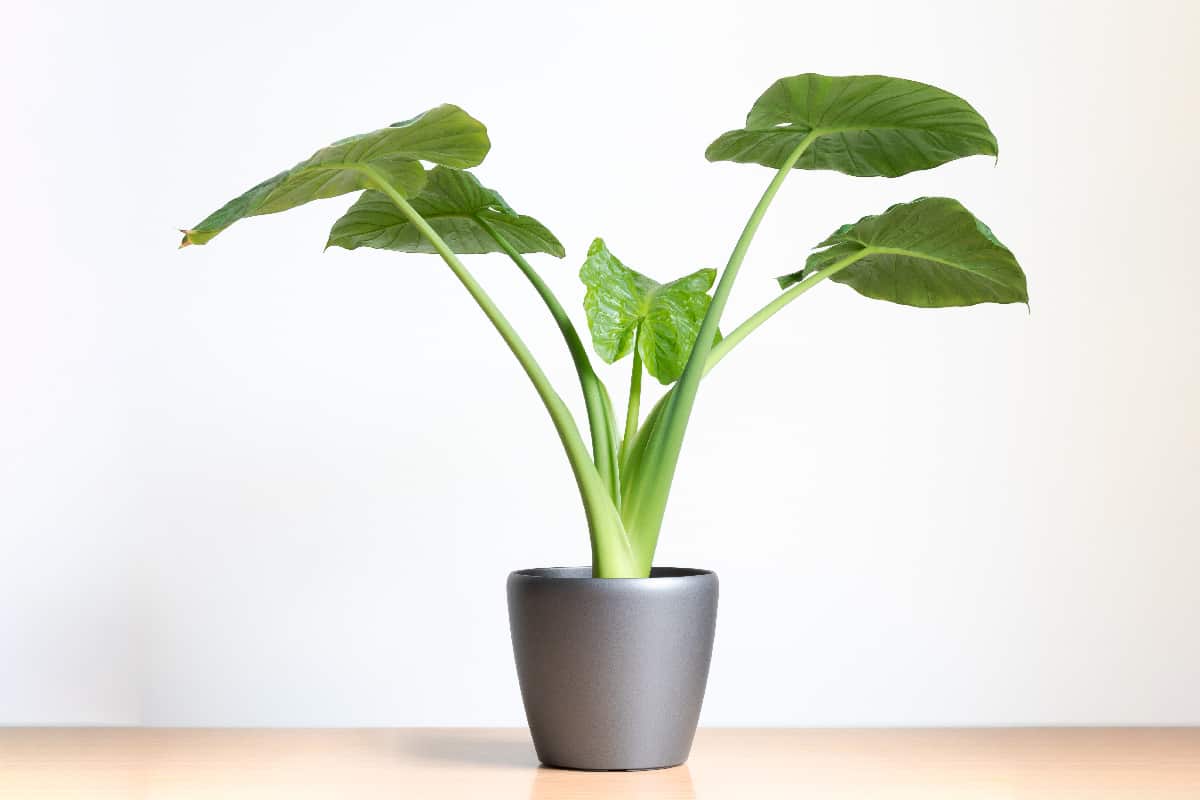
There are two different types of Elephant Ears called Colocasia and Alocasia, Technically, both species can be houseplants, but Alocasia is more common. Colocasia grows larger. Therefore, it is best kept outside.
If you don't want to store your Elephant Ears in paper during the winter, you can enjoy them as houseplants!
Where Should I Place An Elephant Ear In My House?
What Are Elephant Ear USDA Hardiness Zones?
USDA Hardiness Zones 8 through 11 are where Elephant Ears thrive best. These zones are in the lower region of the United States.
From sunny California to hot and humid Texas, Elephant Ears do exceptionally well.
How Do I Care For Elephant Ears?
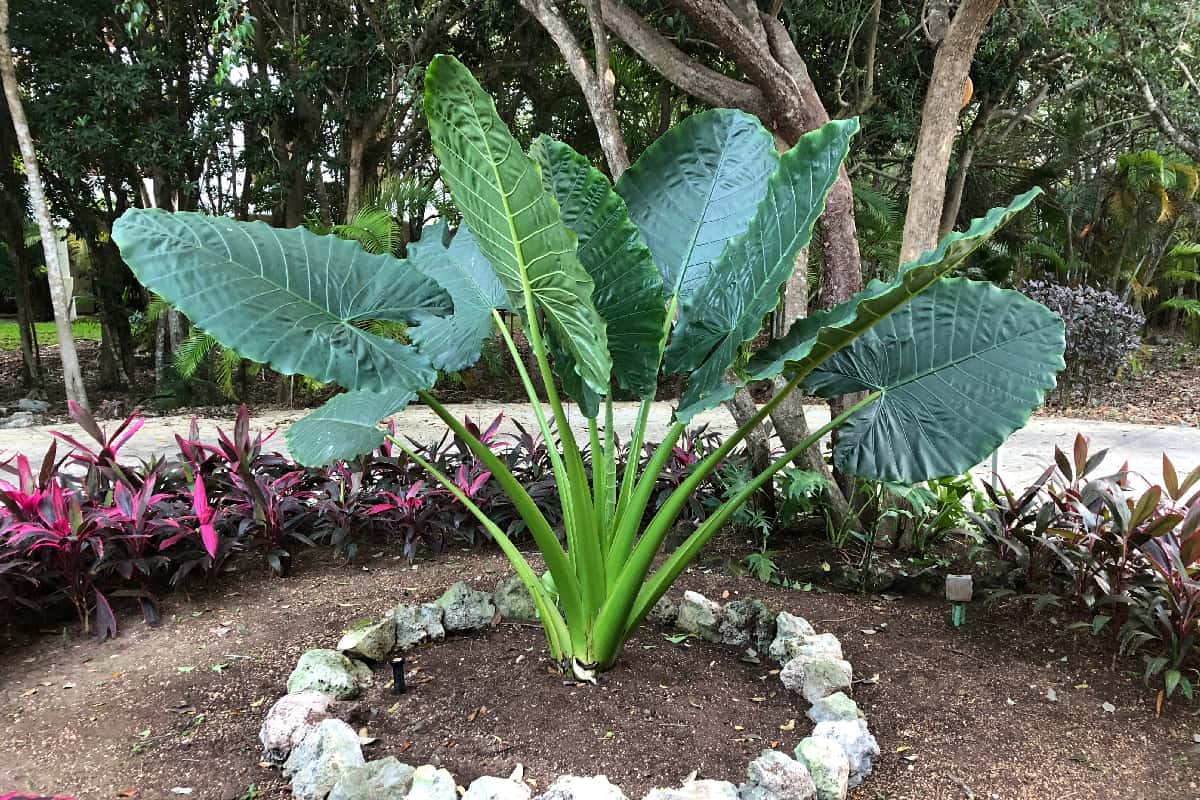
Elephant Ears require TLC, just like every other plant. Let's review some soil, water, and sun requirements. Let's show our Elephant Ears some love.
Soil
Elephant Ears love fertile, loamy, and slightly acidic soil. Add 50% compost to your ground to keep your plant healthy. The great thing about compost is you can make your own for free!
Water
Elephant Ears are tropical plants and therefore prefer moist soil. Make sure they are well watered, and don't let them dry out. Generally, they should need about 2-3 inches of water per week.
Sun
Elephant Ears can be grown in full sun to partial shade. However, they lean towards preferring partial shade. So plant them somewhere with dappled sunlight.
How Big Do Elephant Ears Get?

Elephant Ears are naturally large plants. They grow from 2-9 feet tall and 2 to 9 feet wide. This will depend on the type and species of Elephant Ears you have.
Temperature is also a factor as the Elephant Ears will be smaller in colder regions.
How Do I Know Which Type Of Elephant Ear I Have?
Colocasia and Alocasia are the two types of Elephant Ears. Each plant needs to receive the right kind of care to grow. Usually, you can tell them apart by their coloring, size, and other factors.
Alocasia

Alocasia is sometimes smaller than Colocasia, but this is not a hard and fast rule. They have erect and lively leaves that are waxy and shiny.
You will see veins running through the leaves, giving them a textured or ribbed feel. This variety does best in zones 10 and 11, where it's the hottest.
Colocasia
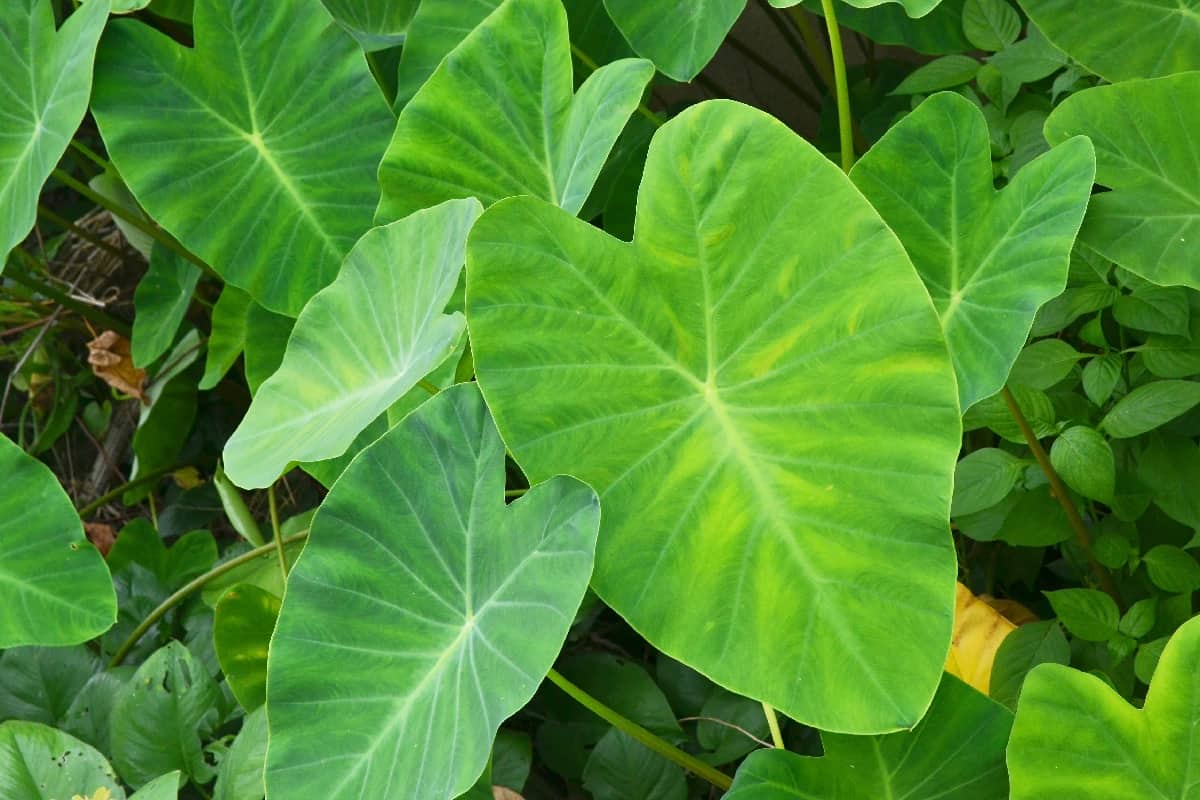
Colocasia leaves tend to point downwards compared to Alocasia leaves. Instead of shiny leaves like Alocasia, Colocasia has matte leaves. This variety is hardy in zones 8 through 10.
Should I Fertilize Elephant Ears?
Absolutely! Elephant Ears can take a hefty dose of fertilizer. It is recommended that you fertilize in the spring, summer, and fall. Stop fertilizing in the winter while they are dormant.
Click here to see this fertilizer on Amazon.
Are Elephant Ears Toxic?
Unfortunately, Elephant Ears are toxic to humans, cats, and dogs. If you have an Elephant Ear houseplant, it is best to put it up high to avoid it being messed with.
If your Elephant Ears are grown outdoors, ensure your animals and little ones don't have access to it.
Are Elephant Ears Invasive?
Elephant Ears are not only invasive but also aggressive growers. Give them plenty of space between other plants to prevent smothering. Different ways to contain your Elephant Ears include using rocks as a border.
Can You Propagate Elephant Ears?
Propagating Elephant Ears is easier than you think! Although they can't be propagated from cuttings, you can divide and plant the tubers. Be sure to separate them until spring to prevent plant stress.
Should I Prune Elephant Ears?
Regularly pruning does wonders for many plants. This is no exception for Elephant Ears. Using a sharp pruning shear, cut the stem when you notice drooping.
If you notice any yellowing of the leaves, cut them to prevent diseases.
Pro Tip: Never forget to wash your shears in bleach afterward to prevent spreading diseases to other plants.
Check out these shears on Amazon.
Do Elephant Ears Suffer From Diseases Or Pests?
Fungal diseases, like leaf blight, are the most common disease problems amongst Elephant Ears. You probably have leaf blight if you notice any oozing fluid, leaves that turn purple or yellow, or fuzzy growth.
Early detection is critical. Once you notice signs of disease, remove and discard any infected leaves. Then, spray the plant with a copper-based fungicide. This should clear the problem right up!
If the entire plant has been infected, then it is best to throw it away and start fresh.
Wrapping Up
In a nutshell, Elephant Ears are annuals in colder climates, unless you bring them indoors in the winter, and perennials in the hottest regions.
We have learned how to grow, propagate, prune, and care for your Elephant Ear. Now you are ready to be a plant mom and adopt a baby Elephant Ear!
Made it to the end? Check out these helpful and related articles:
11 Best Fertilizers For Indoor Elephant Ears [And How To Use Them]
Why Is My Elephant Ear Plant Dying? [And What To Do About It]


